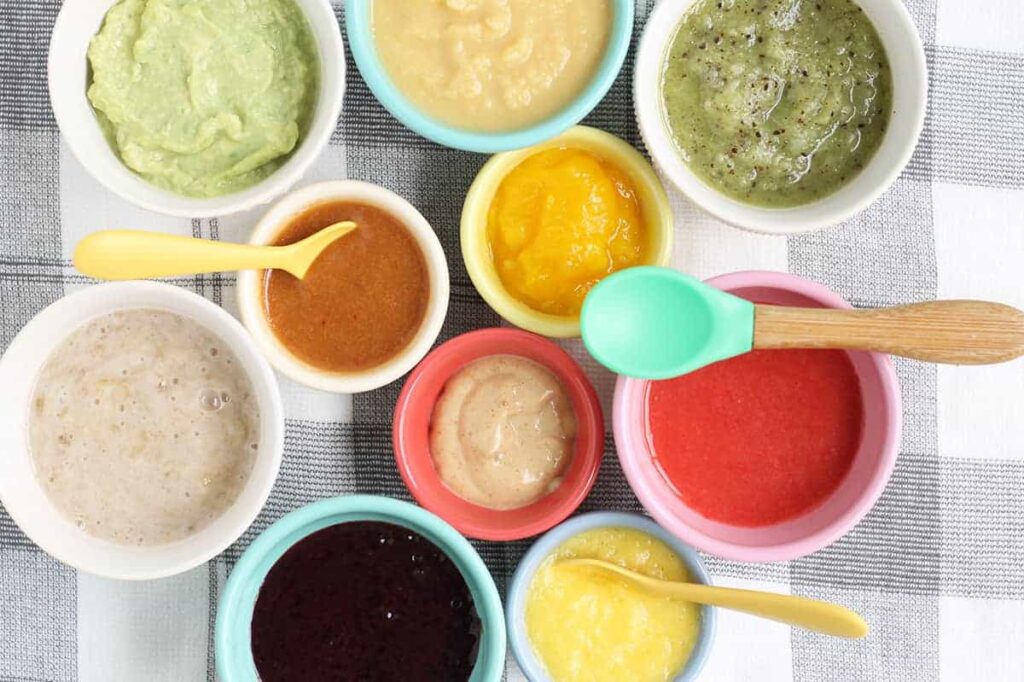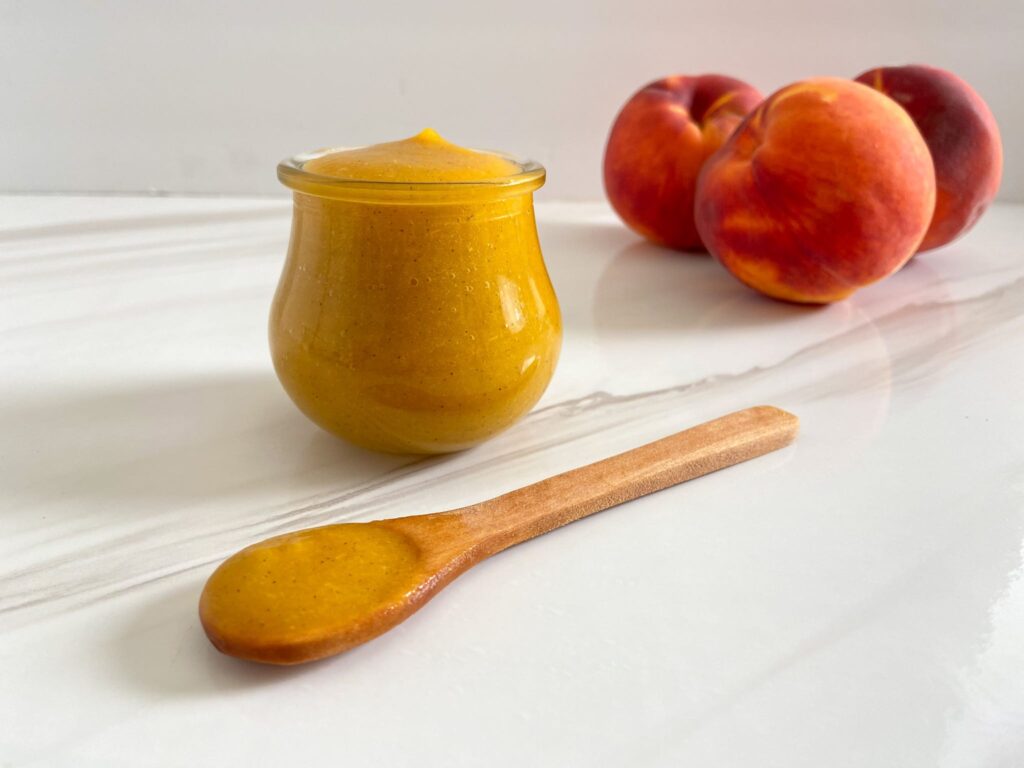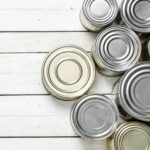As parents, we all want to give our little ones the best start in life — and that definitely includes feeding them fresh, nutritious food. But honestly, sometimes making baby food at home can seem like a lot of work. Sound familiar? That’s where canning baby food comes in! I found that canning is a simple, effective way to preserve baby food, so I always have healthy, homemade meals ready whenever I need them. Plus, it’s a huge money-saver, and I can rest easy knowing exactly what’s in my baby’s food — no hidden ingredients or preservatives.
Well, today I’ll walk you through the basics of canning baby food, share some of my favorite baby puree recipes, and show you how easy it is to make your own canned baby food recipes at home. Whether you’re preparing a simple peach baby food or canning mango puree, I’ve got plenty of tips and ideas to help you get started.
Why Canning Baby Food Is Great?
The idea of canning baby food might sound complicated at first, but trust me — it’s easier than you think! Canning helps preserve the nutrients and flavors of fresh produce, so your baby can enjoy homemade meals year-round. Plus, you can avoid unnecessary preservatives and additives often found in store-bought baby food.
Benefits of Canning Baby Food:
- Longer shelf life: Canned baby food stays fresh for months, so you always have a supply on hand.
- Control over ingredients: You know exactly what’s in your baby’s food, without any added sugars or salts.
- Convenience: With canned food for babies, meal prep is a breeze.
- Variety: You can make baby puree ideas using a wide range of fruits and vegetables — from peach baby food to mango puree.
How to Can Baby Food: A Simple Step-by-Step Guide

Credit: eatright.org
Want to know how we are supposed to can baby food? Let’s have a look.
Step 1: Choose Your Baby Food Ingredients
The first step in canning baby food is picking the right fruits or vegetables. Fresh, ripe produce works best, and you can even use organic options. Here are some of the top choices for baby puree recipes:
- Peaches: Naturally sweet and perfect for peach baby food recipe ideas.
- Mangoes: Full of vitamins and a great option for canning mango puree.
- Carrots, sweet potatoes, and peas: Great for savory purees.
Step 2: Cook and Puree the Ingredients
Once you’ve chosen your ingredients, cook them until they’re soft and easy to blend. For example, if you’re using peaches, how to puree peaches for baby is simple — peel, cook, and blend into a smooth texture.
Here are a few infant puree recipes to get you started:
- Peach Puree: Cook fresh peaches and blend until smooth.
- Carrot Puree: Steam carrots and blend into a smooth consistency.
- Mango Puree: Peel and puree fresh mangoes for a tropical treat.
Step 3: Can the Puree
After pureeing the ingredients, pack the puree into sterilized jars. Make sure there’s enough space at the top for expansion. Then, use a water bath canner or pressure canner to preserve the food.
Homemade Baby Purees: Delicious and Nutritious

Credit: yummytoddlerfood.com
When it comes to canned baby food recipes, you can get as creative as you like. Here are a few easy and healthy baby puree ideas that are perfect for canning baby food:
- Apple and Pear Puree: Simply cook apples and pears until soft, then blend them together.
- Peas and Carrots Puree: A savory puree made from steamed peas and carrots.
- Sweet Potato Puree: Sweet potatoes make a naturally creamy, nutrient-rich puree.
- Mixed Fruit Puree: Combine fruits like peaches, mangoes, and apples for a delicious fruit medley. You can also make some sweet jam and can it.
Canning Baby Food: The Dos and Don’ts

Credit:madeformums.com
Time to look at some of the do’s and dont’s of canning baby food.
Do’s:
- Do use fresh ingredients: Fresh, ripe produce is the key to making the best baby puree recipes.
- Do follow proper canning guidelines: To ensure safety, follow a reliable canning guide for preserving food at home.
- Do store your jars properly: Once canned, store your jars in a cool, dark place.
Don’ts:
- Don’t add salt or sugar: Babies don’t need extra salt or sugar. Stick to natural flavors.
- Don’t use jars with cracks: Always use jars in good condition to avoid spoilage.
- Don’t skip sterilization: Make sure all equipment, including jars and lids, are sterilized before use.
Can Babies Eat Canned Food?
Many parents wonder, can babies eat canned food? The answer is yes — but it’s important to make sure the food is homemade and properly canned. Canned baby food recipes should be free from preservatives and added sugars. The beauty of canning baby food at home is that you control exactly what goes into it.
Can Baby Food Have Salt?
It’s generally recommended to avoid adding salt to your homemade baby food. Babies’ kidneys are still developing, and excessive salt can put unnecessary strain on them. Always use natural ingredients without added seasoning.
A Peachy Treat: Peach Baby Food Recipe

Credit: raisingveggielovers.com
Let’s talk about a favorite — peach baby food! Peaches are packed with vitamins A and C, making them a nutritious choice for your little one. Here’s a simple peach baby food recipe for canning:
- Peel and pit fresh peaches.
- Boil or steam the peaches until soft.
- Blend into a smooth puree.
- Can the peaches using your preferred method.
This puree is perfect for babies 4-6 months and is a great introduction to solid foods. Plus, you can freeze or can the puree for later use.
Canning Mango Puree for Baby
Mangoes are another fantastic option for baby puree recipes. Rich in vitamins, antioxidants, and fiber, mangoes make a delicious, tropical puree. Here’s how to can mango puree for your baby:
- Peel and remove the pit from ripe mangoes.
- Blend the mango flesh into a smooth puree.
- Can the puree using a sterilized jar and canning method.
FAQ’s
Here’s a look at some of the most common questions parents have about canning baby food — and the answers you need to get started confidently!
Can I make no-cook baby food by canning?
Yes! You can blend raw fruits like peaches, mangoes, and avocados into purees without cooking them first. Just be sure to follow proper canning instructions to avoid spoilage.
Can babies eat canned food from the store?
It’s best to make your own canned baby food at home to ensure it’s free from preservatives and added sugars. Homemade is always better!
How long can canned baby food last?
When stored correctly, canned baby food can last for up to a year. Always check for signs of spoilage before serving.
What fruits are best for canning baby food?
Peaches, mangoes, apples, and pears are great fruits for baby puree recipes. They’re easy to puree and full of nutrients.
Can I can baby food in glass jars?
Yes, glass jars are perfect for canning baby food. Just make sure they are sterilized and have proper seals.
Wrapping Up
Summing up, canning baby food is such a great way to make sure your little one gets nutritious, homemade meals without the hassle of cooking every single day. Whether you’re whipping up peach baby food recipes or canning mango puree, there’s really no limit to what you can make. Whether you’re just starting out with canning or you’re a seasoned pro, preserving baby food at home is both easy and super rewarding — and it’s a fantastic way to take care of your baby’s health!




